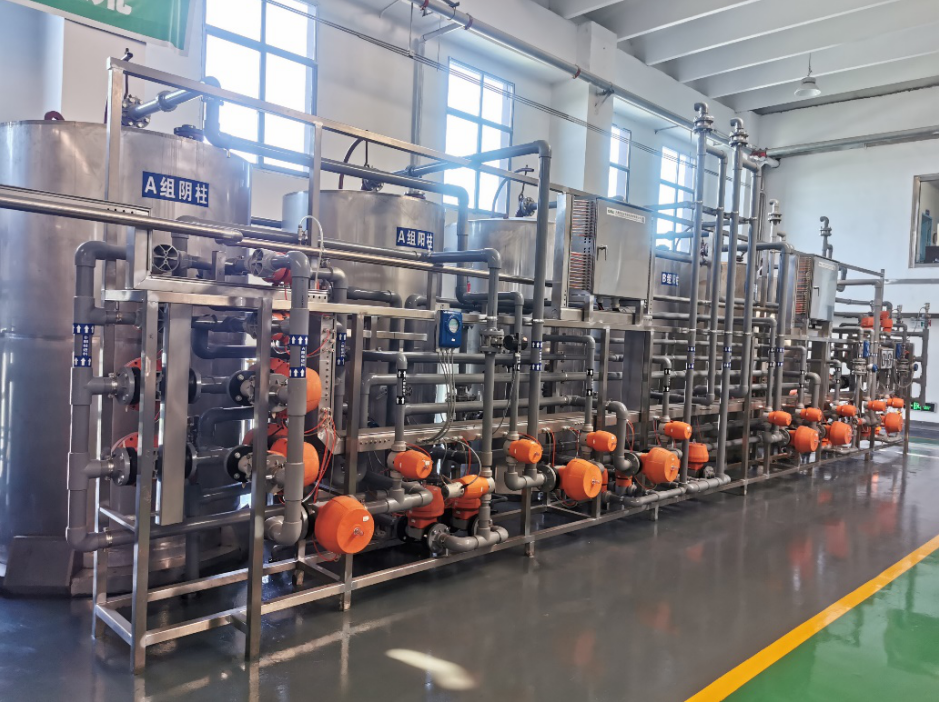3. Automatic upflow packed bed ion exchange equipment
 Equipment principle
Equipment principle
The upflow packed bed process retains the advantages of a countercurrent regeneration system that runs upwards and regenerates downwards. The upflow packed bed equipment has a fixed ion exchange column. At the same time, it can remove part of the resin for mechanical cleaning during a run. The exchange column is set to a single chamber or multiple chambers according to different purposes. Since the exchange column is almost full of resin, it will not cause the phenomenon of resin in disorder.
 Equipment features
Equipment features
Advantages:
1. Adopting the way of counter-current feeding and co-current regeneration, it has less consumption of acid and alkali, but good regeneration effect.
2. Less water consumption and less waste water.
3. Dynamic operation, large exchange capacity and high product quality.
4. Because the exchange column has less invalid space, its height is short.
5. Fully automated operation reduces human factors.
6. The used valve from European brands is reliable and the system is pretty safe.
7. Our team has rich experience both in installation and commissioning on the site. In addition, our company has perfect service system after sale.
Disadvantages:
1. The bigger the volume of the ion exchanger is, the more resin needs.
2. At the last of the treatment, lots of resin in the outlet is still of activity. However, the resin columns are transferred to regeneration, because the materials from discharge outlet doesn’t have access to the standard, which is very wasteful.
 Application
Application
Automatic full-bed ion exchange equipment used in glucose, maltose.

 Automatic full-bed ion exchange equipment is widely used in the fields as follows.
Automatic full-bed ion exchange equipment is widely used in the fields as follows.
-Sugar industry
starch sugar, including glucose, dextrose monohydrate, fructose, crystalline fructose, F42, F55, maltose, dextrin, etc.; xylose.
-Chemical industry
Ethylene glycol and organic acids, the latter includes L-lactic acid, citric acid, VC, monosodium glutamate, and various amino acids, such as lysine, L-phenylalanine, leucine, methionine, etc.
-Food industry
Stevia sugar, sorbitol, and xylitol and sodium erythorbate, etc.
-Pharmaceutical industry
antibiotics, etc.
-Thermoelectric industry
water treatment, etc.




